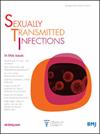Digital interventions for STI and HIV partner notification: a scoping review.
IF 3.6
3区 医学
Q2 INFECTIOUS DISEASES
引用次数: 0
Abstract
BACKGROUND Partner notification (PN) is key to the control of sexually transmitted infections (STIs) and human immunodeficiency virus (HIV). Digital interventions have been used to facilitate PN. A scoping review was conducted to describe the interventions used, user preferences and acceptability of digital PN interventions from patient and partner perspectives. METHODS A systematic literature search was conducted of eight databases for articles published in English, available online with digital PN outcome data. Articles were assessed using the Mixed Methods Appraisal Tool. Quantitative and qualitative data were synthesised and analysed using thematic analysis. RESULTS Twenty-six articles met the eligibility criteria. Articles were heterogeneous in quality and design, with the majority using quantitative methods. Nine articles focused solely on bacterial STIs (five on syphilis; four on chlamydia), one on HIV, two on syphilis and HIV, and 14 included multiple STIs, of which 13 included HIV. There has been a shift over time from digital PN interventions solely focusing on notifying partners, to interventions including elements of partner management, such as facilitation of partner testing and treatment, or sharing of STI test results (between index patients and tested sex partners). Main outcomes measured were number of partners notified (13 articles), partner testing/consultation (eight articles) and treatment (five articles). Relationship type and STI type appeared to affect digital PN preferences for index patients with digital methods preferred for casual rather than established partner types. Generally, partners preferred face-to-face PN. CONCLUSION Digital PN to date mainly focuses on notifying partners rather than comprehensive partner management. Despite an overall preference for face-to-face PN with partners, digital PN could play a useful role in improving outcomes for certain partner types and infections. Further research needs to understand the impact of digital PN interventions on specific PN outcomes, their effectiveness for different infections and include health economic evaluations.性传播感染和艾滋病伴侣通知的数字化干预措施:范围界定综述。
背景伴侣通知(PN)是控制性传播感染(STI)和人体免疫缺陷病毒(HIV)的关键。数字干预措施已被用于促进伴侣通知。我们从患者和性伴侣的角度对所使用的干预措施、用户偏好以及数字化 PN 干预措施的可接受性进行了一次范围界定审查。采用混合方法评估工具对文章进行评估。结果26篇文章符合资格标准。文章的质量和设计各不相同,大多数文章采用定量方法。9 篇文章仅关注细菌性 STI(5 篇关注梅毒;4 篇关注衣原体),1 篇关注 HIV,2 篇关注梅毒和 HIV,14 篇包括多种 STI,其中 13 篇包括 HIV。随着时间的推移,数字 PN 干预措施已从仅侧重于通知伴侣,转变为包括伴侣管理要素的干预措施,如促进伴侣检测和治疗,或共享 STI 检测结果(在索引患者和接受检测的性伴侣之间)。衡量的主要结果是被通知的伴侣数量(13 篇文章)、伴侣检测/咨询(8 篇文章)和治疗(5 篇文章)。关系类型和 STI 类型似乎会影响指数患者对数字 PN 的偏好,临时性伴侣比固定伴侣更喜欢数字方法。结论迄今为止,数字化 PN 主要侧重于通知伴侣,而非全面的伴侣管理。尽管人们总体上更倾向于与伴侣进行面对面的 PN,但数字 PN 仍可在改善某些伴侣类型和感染的治疗效果方面发挥有益的作用。进一步的研究需要了解数字 PN 干预对特定 PN 结果的影响、对不同感染的有效性,并包括卫生经济评估。
本文章由计算机程序翻译,如有差异,请以英文原文为准。
求助全文
约1分钟内获得全文
求助全文
来源期刊

Sexually Transmitted Infections
医学-传染病学
CiteScore
5.70
自引率
8.30%
发文量
96
审稿时长
4-8 weeks
期刊介绍:
Sexually Transmitted Infections is the world’s longest running international journal on sexual health. It aims to keep practitioners, trainees and researchers up to date in the prevention, diagnosis and treatment of all STIs and HIV. The journal publishes original research, descriptive epidemiology, evidence-based reviews and comment on the clinical, public health, sociological and laboratory aspects of sexual health from around the world. We also publish educational articles, letters and other material of interest to readers, along with podcasts and other online material. STI provides a high quality editorial service from submission to publication.
 求助内容:
求助内容: 应助结果提醒方式:
应助结果提醒方式:


